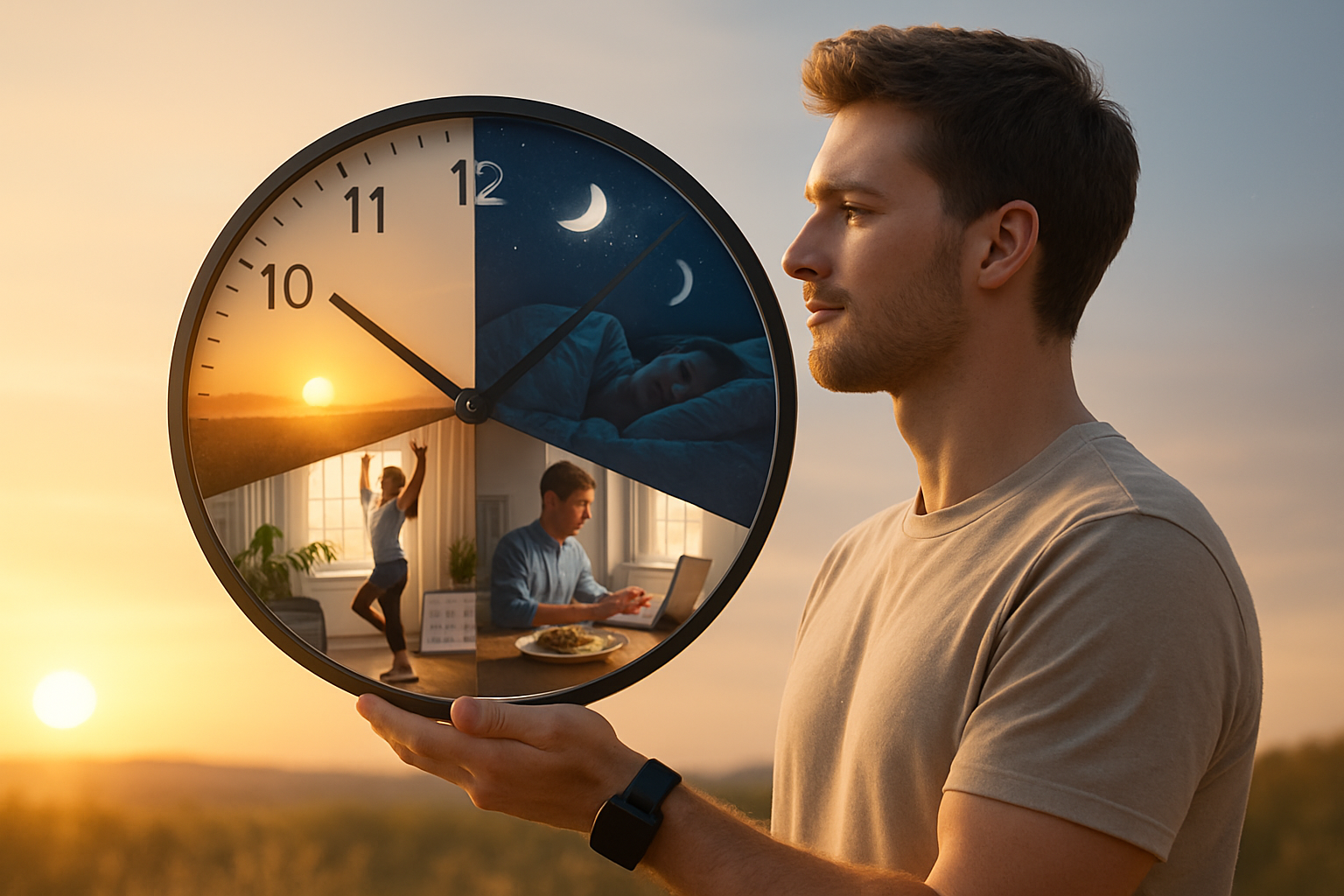Chronobiology: Aligning Your Life with Your Internal Clock
Imagine waking up feeling refreshed, tackling your day with boundless energy, and drifting off to sleep effortlessly at night. What if the secret to achieving this lies not in the latest superfood or workout trend, but in the intricate rhythms of your own body? Welcome to the fascinating world of chronobiology, where science meets nature to unlock the potential of your internal clock.

Beyond Day and Night: The Complexity of Circadian Rhythms
While most people are familiar with the concept of circadian rhythms governing our sleep-wake cycle, the influence of our internal clocks extends far beyond. From hormone production and body temperature regulation to cognitive function and immune response, these rhythms play a crucial role in almost every aspect of our physiology. Recent studies have even linked disruptions in circadian rhythms to increased risks of chronic diseases, including obesity, diabetes, and certain cancers.
Chronotypes: Are You a Lion, Bear, Wolf, or Dolphin?
One of the most intriguing aspects of chronobiology is the concept of chronotypes – individual differences in our natural sleep-wake cycles and peak performance times. Moving beyond the simple distinction of “early birds” and “night owls,” researchers have identified four main chronotypes: Lions (early risers), Bears (follow the solar cycle), Wolves (night owls), and Dolphins (light sleepers). Understanding your chronotype can help you optimize your daily schedule, enhancing productivity and overall well-being.
Chronobiology in Practice: Timing is Everything
Harnessing the power of your internal clock can revolutionize your approach to health and wellness. From the optimal time to exercise and eat to the best hours for creative work and social interaction, aligning your activities with your body’s natural rhythms can lead to significant improvements in energy levels, mood, and cognitive performance. For instance, research suggests that strength training in the late afternoon, when body temperature is at its peak, may yield better results than morning workouts for some individuals.
The Dark Side of Disruption: When Clocks Fall Out of Sync
In our 24/7 society, circadian disruption has become increasingly common. Shift work, jet lag, and excessive exposure to artificial light at night can throw our internal clocks into disarray, leading to a condition known as circadian misalignment. This misalignment has been linked to a host of health issues, including metabolic disorders, cardiovascular problems, and mental health challenges. Recognizing the importance of circadian health, some forward-thinking companies are now implementing chronobiology-based policies, such as flexible work schedules and circadian-friendly lighting systems.
Chronobiology Life Hacks
-
Expose yourself to bright light early in the morning to reset your circadian clock
-
Maintain consistent meal times to synchronize your digestive system
-
Avoid blue light exposure at least two hours before bedtime
-
Consider your chronotype when scheduling important tasks or meetings
-
Practice time-restricted eating to align with your body’s natural metabolic rhythms
-
Use light therapy to combat seasonal affective disorder and jet lag
As we continue to unravel the mysteries of our internal clocks, one thing becomes clear: living in harmony with our biological rhythms is not just a path to better health, but a key to unlocking our full potential. By embracing the principles of chronobiology, we can tap into the natural wisdom of our bodies, creating a life that flows with the ebb and tide of our internal timekeepers. The future of health and wellness lies not in fighting against our nature, but in synchronizing with the intricate dance of our cellular clocks.




